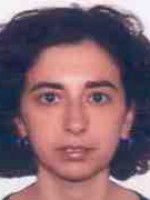resumo
Protein nanofibers are gaining much attention due to their unique mechanical strength, thermal stability and functional properties, thus promoting research on new preparation methodologies. Most fibrillation processes developed so far are time consuming, usually taking from 8 h to 15 h, which represents a major drawback in their use. The use of alternative solvents, such as ionic liquids (ILs) and deep eutectic solvents, as fibrillation agents has been recently reported with considerable reduction in the fibrillation time. This fact encouraged us to study the fibrillation of hen egg white lysozyme (HEWL) in the presence of several ILs from two different families, based on i) imidazolium and ii) cholinium cations, combined with different anions derived from organic acids. The properties of the obtained protein nanofibers were studied using UV-vis and fluorescence spectroscopy, electrophoresis, circular dichroism and electron microscopy. All ILs used were shown to fibrillate HEWL within a few hours, generally achieving over 70-80% of conversion ratios. Typically, worm-like nanofibers were obtained, with 0.3-1 mu m of length and 15-40 nm of width, depending on the ILs used. Furthermore, the presence of the acetate anion increases the ability of HEWL to form beta-sheet structures. These results show that there is a correlation between the IL chemical structure and the structural features HEWL fibrils, which can be advantageously used in multiple applications in the bionanotechnological field. (C) 2018 Elsevier B.V. All rights reserved.
palavras-chave
AMYLOID FIBRILS; PROTEIN; AMYLOIDOGENESIS; AGGREGATION; TEMPERATURE; CHOLINIUM
categoria
Chemistry; Physics
autores
Silva, NHCS; Pinto, RJB; Martins, MA; Ferreira, R; Correia, I; Freire, CSR; Marrucho, IM
nossos autores
agradecimentos
Nuno H. C. S. Silva is grateful to Fundacao para a Ciencia e Tecnologia for the PhD grant SFRH/BD/85690/2012. Carmen S.R. Freire, Isabel Correia and Isabel M. Marrucho acknowledge FCT/MCTES (Portugal) for contracts under Investigador FCT 2012, and for the project FCOMP-01-0124-FEDER-041484. This work was financed by Research Unit GREEN-it "Bioresources for Sustainability" (UID/Multi/04551/2013) and CICECO-Aveiro Institute of Materials (Ref. FCTUID/CTM/50011/2013).






